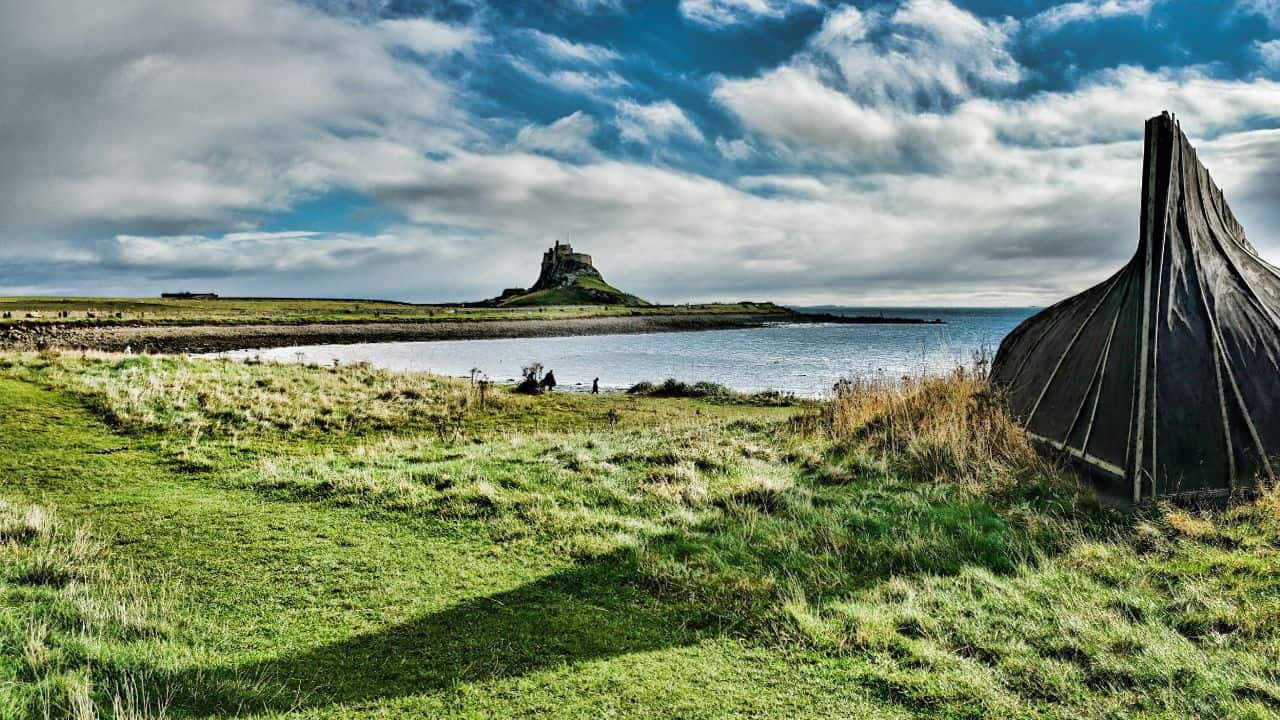Wild camping in Northumberland allows you to experience the beauty of the region’s magnificent landscape, a true paradise for anyone seeking to immerse themselves in nature, explore ancient ruins, observe elusive wildlife, or soak in the sunshine at one of the county’s many breathtaking beaches.
This is one of England’s most picturesque regions, full of natural wonders waiting to be discovered and explored. Below, I’ll look at several of the county’s top-class wild camping destinations and tell you all you need to know about them – where they are, how to get there, and what to expect.
Is Wild Camping in Northumberland Legal?
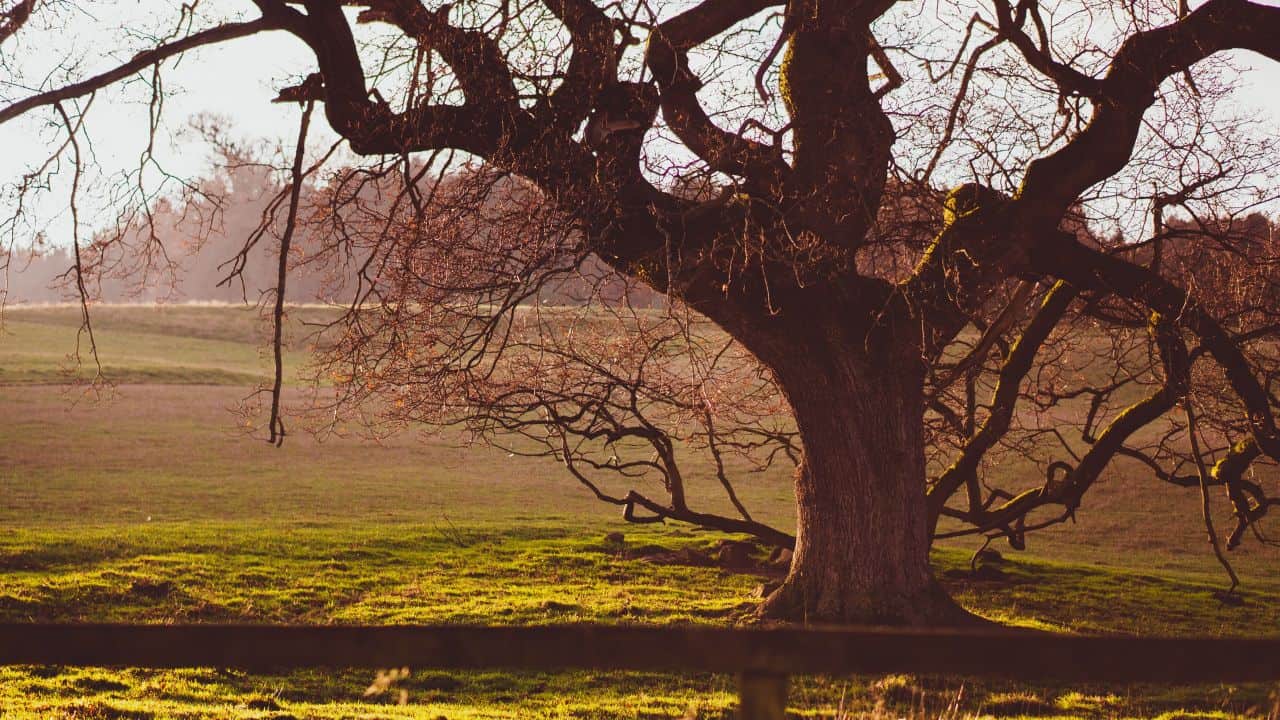
Except for Scotland, unpermitted wild camping (i.e. without the landowner’s permission) is illegal in most of Northern Ireland, Wales, and England. This includes Northumberland – almost all of the land in the county is privately owned, and wild campers are always at risk of getting moved if spotted.
However, there are many places in Northumberland where no one will notice you if you pitch a tent in the wild because the county is pretty big. As long as you use common sense – staying away from buildings and cultivated lands, pitching late and departing early, and leaving no trace – you won’t get in trouble for wild camping in Northumberland. Be smart, and you’ll enjoy breathtaking landscapes without any worries!
Best Wild Camping Spots in Northumberland
Harbottle
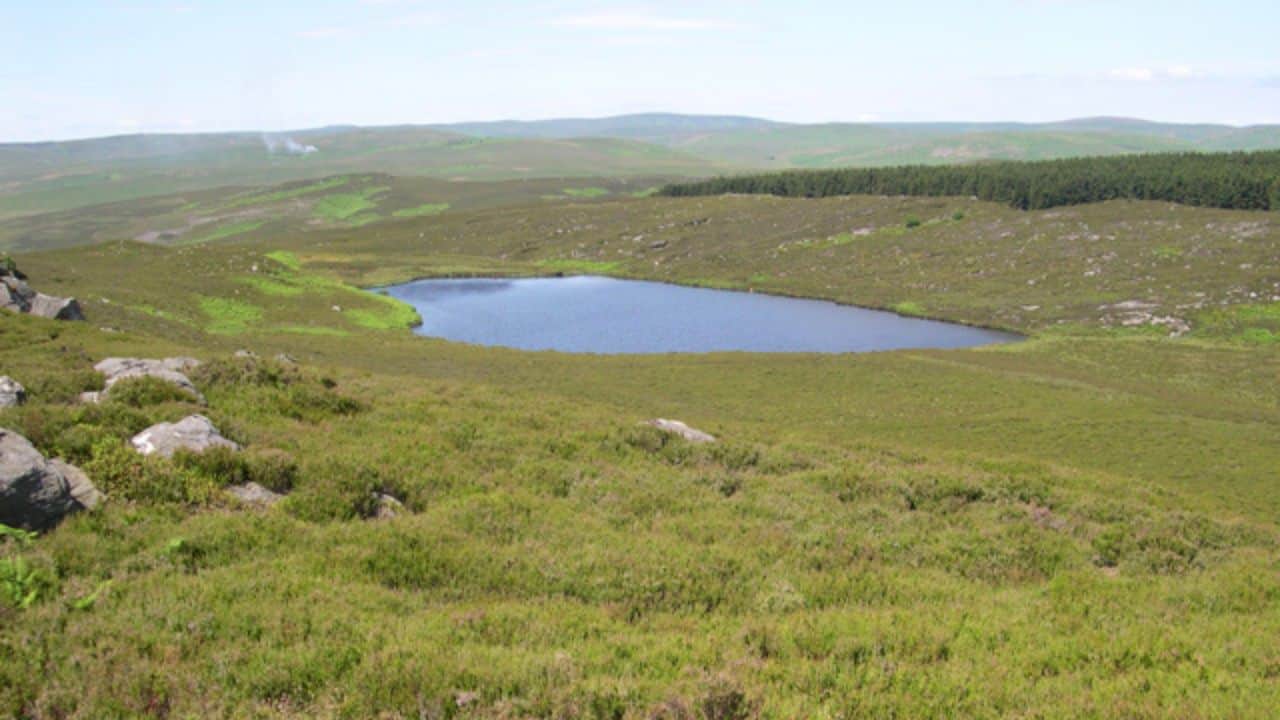
The first wild camping spot on my list is in the central part of the county, about a mile and a half southwest of the village of Harbottle. It is situated in Northumberland National Park, home to England’s darkest skies and cleanest rivers. As such, it’s an excellent destination for wild campers who are also into stargazing and for all those looking to spend their time in the picturesque wilderness.
The location in question is a ruined farmhouse next to a woodland. While you can undoubtedly pitch your tent inside its walls – for wind protection and to make it harder for others to spot you – a better option is to camp between the ruins and the forest. There’s a piece of slightly raised ground just behind the ruins: from there, you’ll have a fantastic view of the valley to the southeast.
You’ll be able to reach the ruined farmhouse from any direction. However, you must be careful while setting up camp – remember that this is still private land. While it’s true that other people rarely frequent this part of the national park, you should still use a camo tent and pitch late/leave early. It goes without saying that making a campfire is out of the question here, too.
The whole area around the spot marked on the map is worth exploring on foot. A good idea would be to follow the nearby river Coquet to the west, deeper into the national park – you’ll go past ancient hay meadows, rocky outcrops, and rolling moorlands. The village of Harbottle is also worth checking out. While it consists of just a single street, it is overlooked by the ruins of a medieval castle and is one of Coquetdale’s most picturesque hamlets.
Dunstanburgh Castle
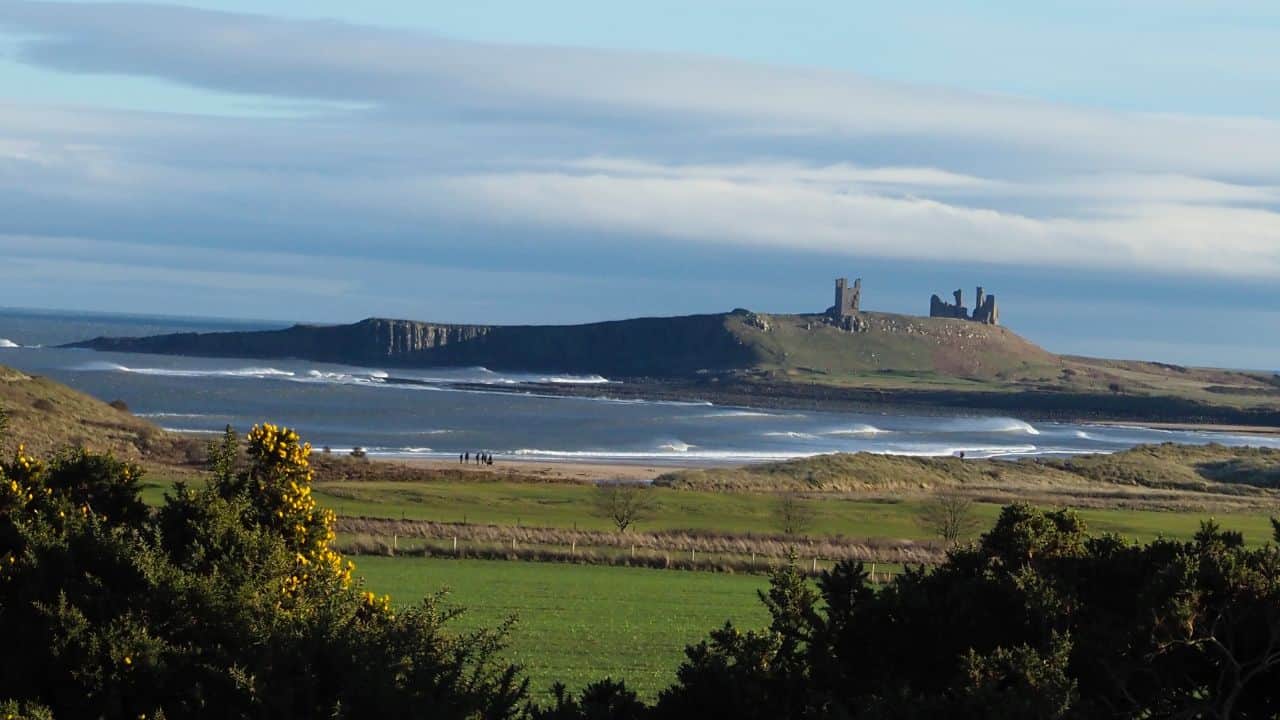
We’re moving twenty miles west to Northumberland’s coastline. Well-known for superb seafood, hidden bays, and blazing sunsets, the county’s seashore is one of the most pristine in England. However, what makes Northumberland’s coastal area truly remarkable are its castles – these ancient buildings are standing guard along the dramatic shoreline, and wild camping next to them is always an unforgettable experience.
Remember that these places are popular tourists, which is why you can never pitch too close to busy areas. The same applies to Dunstanburgh Castle, about 8 miles northeast of Alnwick. Built between 1313 and 1322, it is the largest castle in Northumberland and, as such, attracts many visitors every year. Fortunately, wild camping next to this castle is possible – you just have to get down to the beach behind it.
The spot marked on the map is a small, grassy plateau located just behind the hill with the castle. It is situated right above the rocky beach and can provide a wild camper with a fantastic view of the North Sea in three directions. However, the most important thing about this place is that you won’t be easily spotted (you should still pack up and leave at sunrise, though).
Another thing that makes this location a phenomenal wild camping spot is that it’s situated in the Northumberland Coast Area of Outstanding Beauty. In other words, there are many things to see and do here – from walking the region’s unspoiled beaches to visiting world-famous historical sights like the Bamburgh Castle. Remember to check out the nearby Farne Islands too, especially if you’re into wildlife watching.
Kielder Water
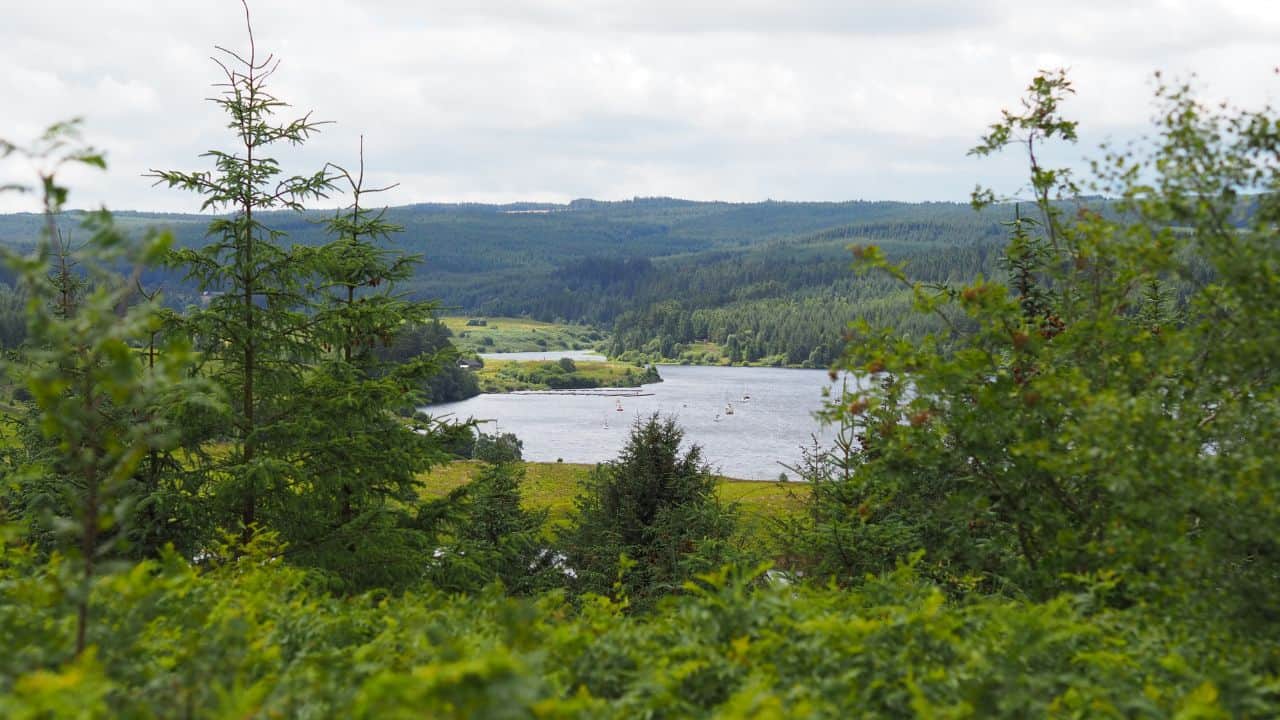
Another fantastic Northumberland wild camping destination is the enormous man-made reservoir called Kielder Water. Situated some 35 miles northwest of Newcastle upon Tyne, Britain’s largest artificial lake is surrounded by beautiful woodlands full of excellent wild camping spots. It’s a particularly great destination for wild campers interested in wildlife watching – here, water voles, ospreys, and red squirrels await you around every corner.
I did not mark a specific spot on the map, as wild camping is possible on pretty much any side of Kielder Water. You can choose between pitching a tent on the surrounding hills or near the water. Still, it’s important to remember that wild camping around the lake is illegal – like elsewhere in England – so you’ll want to find a secluded spot, pitch late, and leave early.
You’ll want to stay away from lakeside tracks – many people who come here tend to hire bikes and cycle around the lake. Another thing to remember is that this is one of England’s best stargazing destinations, so choosing a day with little to no cloud cover is also a good idea. Finally, there are car parks on all sides of the lake, so parking should not be an issue (you can also park in the nearby village of Falstone).
As expected, there’s plenty to do and see around the reservoir. Kielder Castle, situated at the lake’s northern end, is an 18th-century hunting lodge with a visitor centre. The woodland surrounding the reservoir is full of architectural, art, and scientific installations that are all worth checking out, particularly Kielder Observatory. But the best thing you can do here is simply walk around while taking in the lake’s sights, smells, and sounds.
For those seeking an alternative to Kielder Water, the charm of wild camping in the New Forest offers a captivating counterpoint. The vast, unspoiled landscape, reminiscent of Kielder’s enchanting woodlands but with a uniquely southern English touch, is equally teeming with wildlife – from the New Forest ponies to an array of birds. Much like at Kielder Water, it’s all about finding a secluded spot, embracing the sense of adventure, and immersing yourself in the peace and tranquility that wild camping in the New Forest can provide.
Spithope Bothy
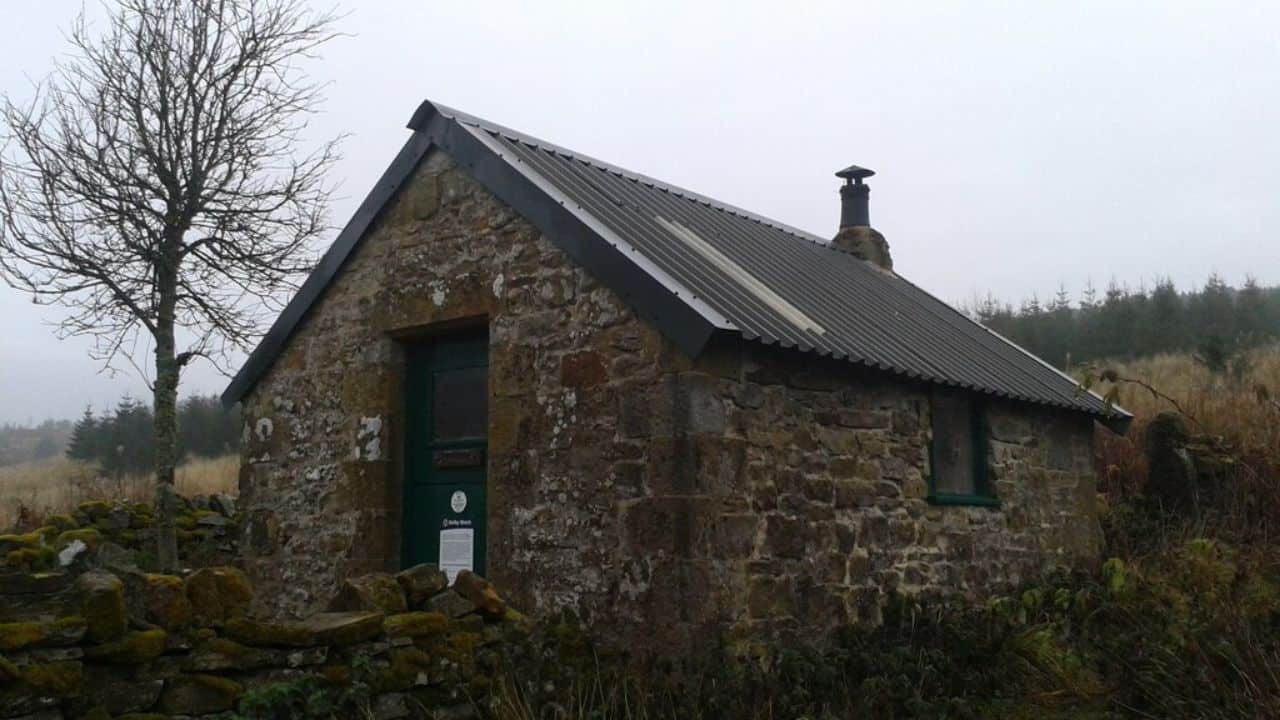
A hilly region straddling the England-Scotland border, the Cheviots are a culmination of elusive wildlife, crashing waterfalls, and idyllic valleys. The English section of the region is situated in the Northumberland National Park and is one of the country’s least populated areas. Obviously, this makes the Cheviots a prime wild camping destination – here, you won’t have to worry about getting spotted.
While you can undoubtedly pitch your tent pretty much anywhere on these rolling hills, your best bet is staying in Spithope Bothy. Situated less than two miles northeast of Byrness Village, this cosy little building is an excellent place to stay while exploring the Cheviots on foot. You will find a bunk bed, a chair with some tables, and a wood-burning stove. You will, of course, have to bring your own wood if you want to use the stove.
An important thing to mention here is that, like in the case of other bothies managed by the MBA (Mountain Bothies Association), you’re expected to respect the building and have in mind all the other people who will use it in the future. This principally translates to not leaving the rubbish behind you – take it with you instead. Like other bothies of this type, Spithope Bothy has no toilet facilities, so when answering the “call of nature”, do it at least a few hundred metres from the building.
Wherever you go from Spithope Bothy, you’ll end up in a stunning wilderness. To the east is the Northumberland National Park, and to the west is Whitelee Moor National Nature Reserve. To the south is the beautiful Kielder Water and its woodlands, which I’ve described above. And to the north is Scotland, where wild camping is completely legal. The Anglo-Scottish border is less than a mile from the both.
For those looking for a refreshing change of scenery, wild camping near the River Avon offers an enchanting experience. The gentle lull of the river combined with the picturesque surroundings makes it an equally serene alternative. Being by the river, you can also engage in activities like fishing or simply watching the dance of light on the water at dawn.
Budle Bay
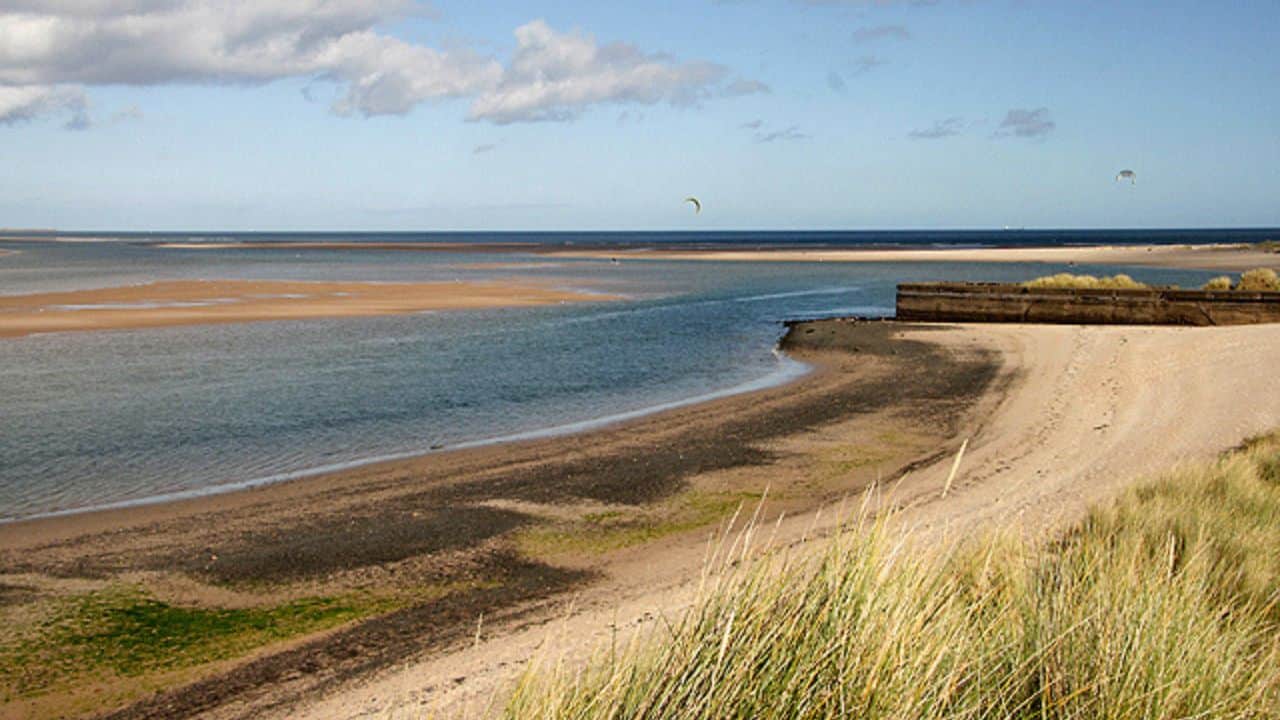
The next wild camping spot is between the Holy Island of Lindisfarne and Bamburgh Castle in one of Northumberland’s most well-known regions. The location in question is Buddle Bay, a 1-mile-wide sea inlet surrounded by diverse coastal habitats, including rocky cliffs, sand dunes, salt marshes, sandy beaches, and rolling hills. Wild campers seeking breathtaking scenery in Northumberland should have this place at the top of their lists.
One of the best things about Buddle Bay is that it’s very tranquil – you will most likely be left alone if you decide to pitch here. This is because most tourists flock to the prominent locations mentioned above (Bamburgh and Lindisfarne). In addition, Buddle Bay has no immediate access or parking, and you’re probably already aware that even the slightest walk can quickly put most people off.
Your best bet is camping in the dunes. Expect spectacular sunrises and a breathtaking view across the water to Lindisfarne Castle. The area is also a birdwatcher’s paradise – here, you can see an almost continuous flight of Terns, Heron, Gulls, and Geese making their way into the bay. If you’re lucky, you’ll also spot some dolphins, otters, and seals.
Another great thing about this tranquil place is that it’s very close to some of Northumberland’s major attractions. To your north, you will have the Holy Island of Lindisfarne, a cradle of Christianity. Bamburgh Castle, famously portrayed in the Last Kingdom TV show, is just half an hour’s walk from Budle Bay to the south. You can also engage in boating, fishing, and swimming while exploring the area.
But don’t forget, Northumberland isn’t the only place in the UK to offer such wild and beautiful camping spots. The serene beauty of Norfolk with its vast sandy beaches, shimmering waterways, and unique wildlife is another fantastic option for wild campers. It’s a refreshing alternative if you crave a different coastline experience, offering the Broads National Park and historic sites like the Sandringham Estate, all wrapped up in an unspoilt, peaceful environment that rivals the tranquillity of Buddle Bay.
Thrunton Wood
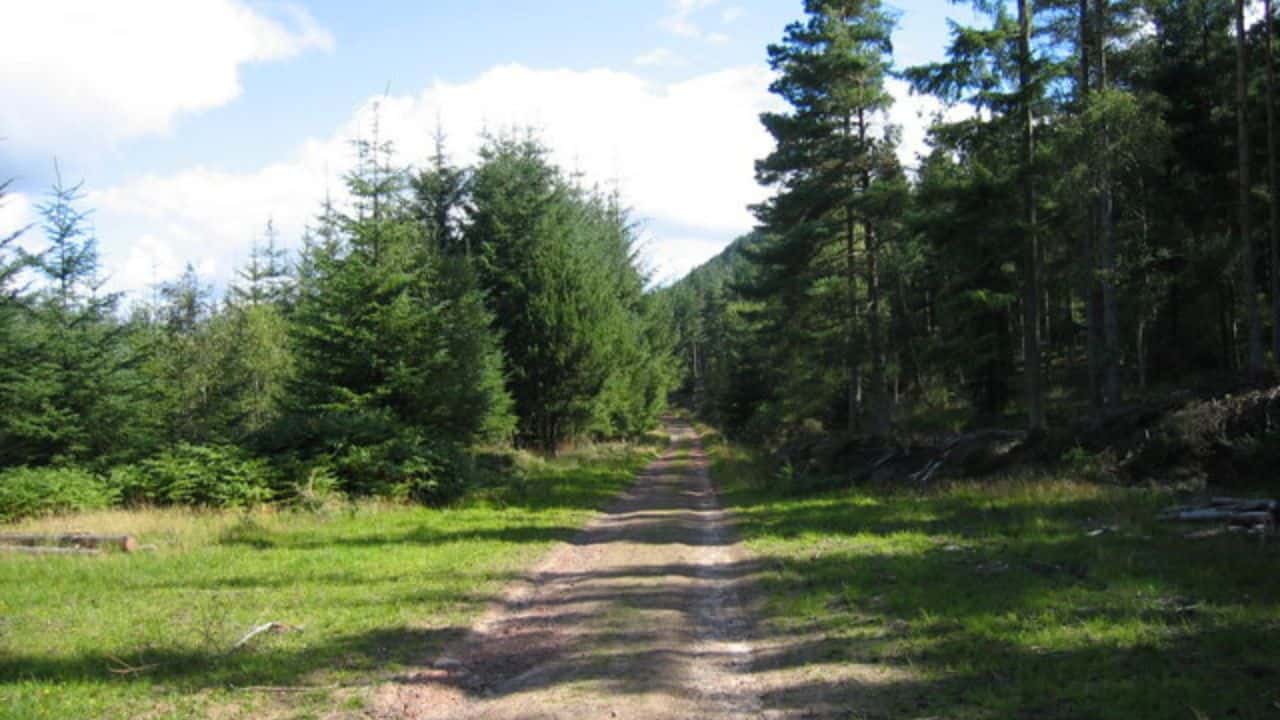
This enchanting forest is planted on and around two steep sandstone peaks – Coe Crag in the south and Thrunton Crag in the north. These towering cliffs provide dramatic viewpoints from which wild campers can admire the stunning Northumbrian landscape. Moreover, the wildlife-filled forest floor and countless scenic footpaths make Thrunton Wood a fantastic place to explore – it’s a top-class wild camping destination in every sense of that term.
Getting to this woodland from Newcastle upon Tyne is as easy as it gets. Drive northwards along A697, take a left at the fork just after New Moor House, and keep going north until you reach the Thrunton Car Park (just west of the Thrunton Long Crag Trout Fishery). Park your vehicle, head into the woods, and search for a secluded spot far from the forest’s popular mountain biking routes.
The other option is camping high up on the crags (Coe Crag is a great wild camping spot), but this will require you to pitch late and leave early, as you’ll be fairly easy to spot. Wherever you choose to camp, you’ll have a lot of things to see in the forest. Some of the sights include the man-made McCartney’s Cave, said to be built by a monk from the nearby village of Callaly, and Castle Hill, once a sight of an iron-age fort.
Another great thing about Thrunton Wood is that it’s halfway between two wild camping spots I’ve already mentioned – Dunstanburgh Castle and the ruined farmhouse near Harbottle. As such, it can be a stopping point on your east-west (or west-east) wild camping journey across Northumberland. And one more thing: this forest is renowned for strange sightings of bigfoots, fairies, and other folklore stories, so keep your eyes peeled!
However, if you fancy a change of scene from the Northumbrian woods and crave the lull of a different kind of wild, consider wild camping in Northern Ireland. This region offers an incredible mix of dramatic coastline, shimmering lakes, and towering mountains, making it an adventurous alternative. From the enchanting Giant’s Causeway and Mourne Mountains to the serene beauty of Fermanagh’s Lakelands, Northern Ireland’s wilderness promises an unforgettable camping experience, steeped in captivating landscapes and rich history, presenting a unique blend that complements the charm of Cragend Hill.
Druridge Bay
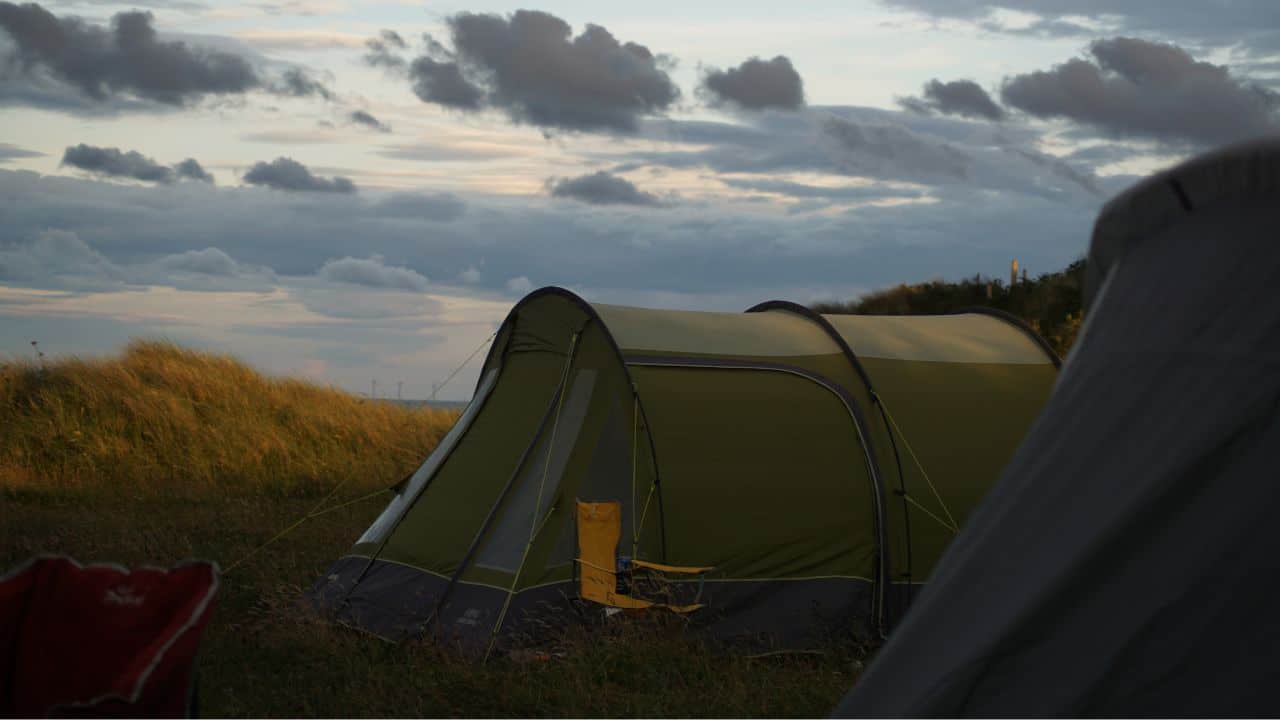
Here we have yet another coastal wild camping destination in Northumberland – Druridge Bay. This place is only a few miles south of Amble and features golden sand, perfect for wild camping. However, the best thing about Druridge Bay is that it’s less frequented by tourists and hikers than the beaches further to the north.
The easiest way to reach Druridge Bay from Newcastle upon Tyne is by following A189 and A1068 to the north and turning right just before the settlement of Radcliffe. Once you arrive at the coast, you’ll want to take another right and park your car at the nearby Togston Car Park. After that, you’ll have a choice of walking north or south along the beach while searching for a suitable place to pitch your tent.
While it’s true that Druridge Bay is relatively tranquil compared to some beaches further north (and those closest to Newcastle upon Tyne), one must remember that wild camping here is illegal. In other words, your best bet is setting up camp at dusk and leaving at sunrise. Don’t make a campfire, and make sure to take away all of your litter.
Besides the picturesque towns of Amble and Hadstone, a place worth checking out while in the area is Hauxley Wildlife Discovery Centre, which is immediately north of the bay. This is one of Northumberland’s best wildlife-watching spots. Built by volunteers, the centre allows visitors to observe a variety of the region’s wildlife, ranging from red squirrels to otters.
Cragend Hill
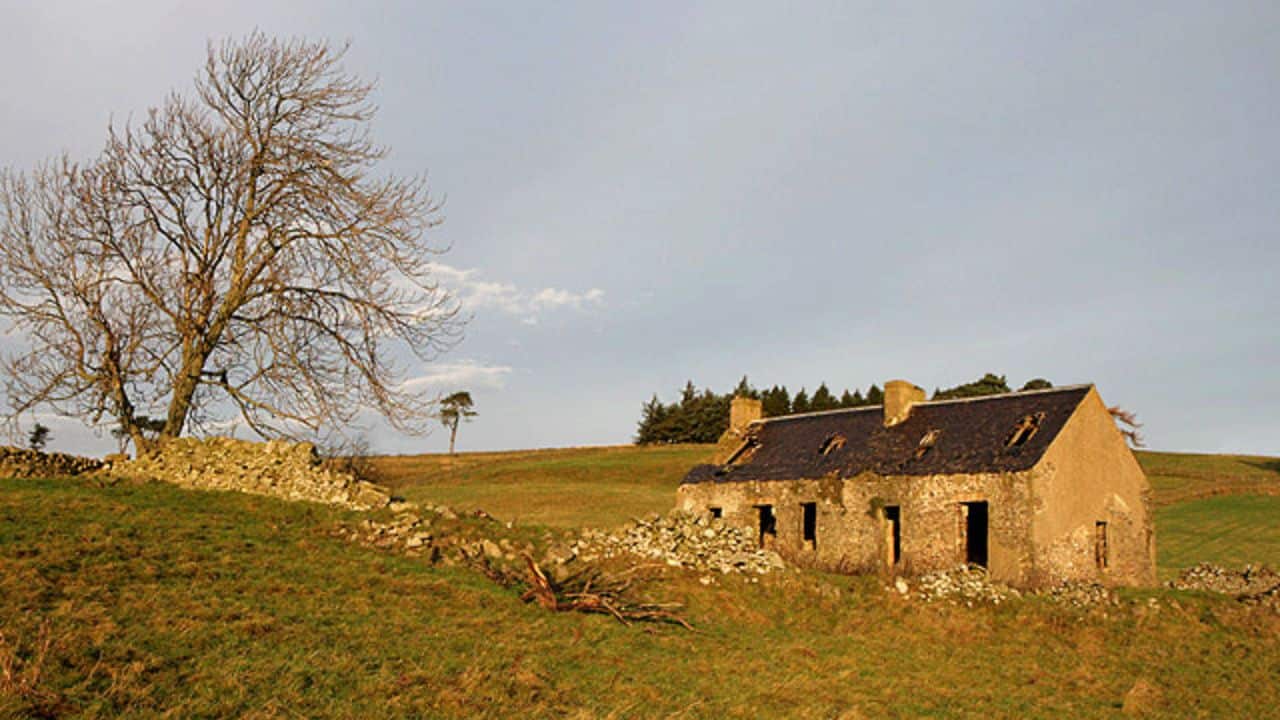
This particular wild camping destination is an excellent choice for folks looking to stay close to civilisation. Situated just east of the town of Rothbury, Cragend Hill is mainly known for Cragside, a Victorian manor that was once among the most technologically advanced estates in the world. The hill is almost entirely covered by a forest and is full of secluded spots where you can pitch your tent.
Once you arrive at the top of the hill by car, you’ll want to park at Nelly’s Moss Car Park, which offers free parking, unlike Crozier Car Park to the south. From there, cross the area between the two Nelly’s Moss Lakes and keep walking west, deep into the woods. Look for a suitable place to set up camp – you’ll want to stay as far away from the lakes, Carriage Drive (the road going through the forest) and Black Burn (a nearby creek) as possible.
While camping in the area, you’ll want to head back to Nelly’s Moss Lakes – these small-ish bodies of water are very tranquil and great for picnicking or relaxing in the sun. However, the area’s biggest attraction is undoubtedly the Cragside Manor, which shouldn’t be more than a mile west of your camping spot. With swathes of rhododendron, foaming waterfalls, and artificial lakes, the estate deserves the status of one of North East England’s most visited sites.
Another option is to check out the nearby town of Rothbury and relax in one of the many tea rooms and pubs on its bustling high street. If you’d rather keep exploring the wilderness, your best bet is to head to Thrunton Wood (just north of Cragend Hill) which I’ve described above. And for breathtaking views of the Northumbrian countryside, head to Thompson’s Rock in Simonside Hills (3 miles southwest).
Where to Next?
There’s no denying the untamed allure of wild camping in Northumberland, where each sunrise seems to unfurl a new layer of natural beauty. However, if you’re up for an equally enthralling experience with a distinct charm, wild camping in Devon’s picturesque countryside is an incredible alternative.
With its lush rolling hills, dramatic coastal views, and a wealth of hidden gems to explore, wild camping in Devon promises an enriching experience steeped in serene landscapes and unique biodiversity. It’s an invitation to explore the road less travelled, yet equally satisfying. The two locations might offer contrasting sceneries, but both guarantee unforgettable camping adventures. Choose Devon for a distinct wild camping experience; its magic awaits!

I love hiking, backpacking, and camping. From the Camino de Santiago to the West Highland Way in Scotland or simply a great day hike on the weekend. Hiking refreshes me, my mind, and keeps my body reasonably fit. So far I have walked three Camino routes and many other long distance hikes in the UK, Canada, and around the rest of Europe. One of the best was my hike up Ben Nevis.

